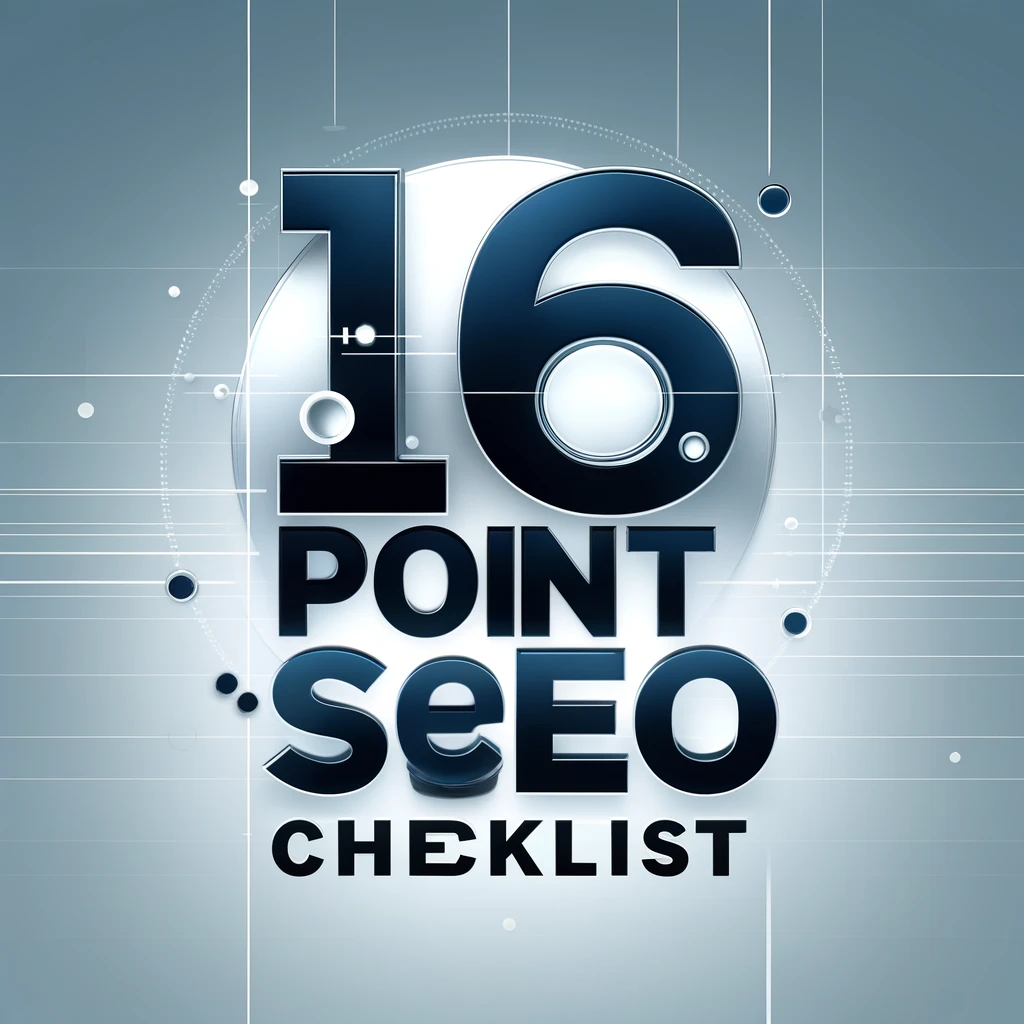[ad_1]
Welcome to your easy-to-follow on-page SEO checklist! Whether you’re starting out or you’ve been improving websites for a while, this guide is here to help you make every part of your website better for SEO. Below, you’ll find a checklist that goes over everything from making a great title tag to using advanced schema markup. Each point has a clear action step, explains why it’s important, and gives an example to show you how to do it right. This 16 point on-page SEO checklist will guide you in making your website easier to find, use, and enjoy, which means more people will visit and use your site. Let’s get started and see how you can make your content stand out in search results!
| # | SEO Element | Action Item | Purpose | Example |
|---|---|---|---|---|
| 1 | Title Tag | Include the focus keyword and keep the title around 60 characters. | Enhances visibility and relevance in search results. | “On Page SEO Full Guide by Pavan Agrawal – Essentials” |
| 2 | Meta Description | Write a compelling meta description within 160 characters, including the focus keyword. | Improves click-through rates from search results. | “Explore our complete guide on On Page SEO by Pavan Agrawal to master your website’s search performance.” |
| 3 | Subheadings | Use subheadings (H2 tags) to break up content; include variations of the focus keyword. | Improves readability and SEO structure; enhances keyword relevance. | H2: “Key Strategies in On Page SEO” |
| 4 | Content | Create high-quality, informative content that naturally includes the focus keyword. | Satisfies user intent and improves relevancy for search rankings. | Include sections discussing various on-page SEO techniques, using “SEO guide” periodically. |
| 5 | Keyword Research | Perform keyword research to find relevant keywords to include in the content. | Identifies target keywords that align with user searches. | Use tools like Google Keyword Planner to find related terms like “SEO optimization tips” and “SEO tools”. |
| 6 | Image Optimization | Describe images using alt tags and include relevant keywords. | Helps search engines index images properly; improves relevance in image search results. | Alt text: “Screenshot of SEO analysis tool results” |
| 7 | Internal Links | Include internal links to other relevant pages on your website. | Improves site navigation and spreads page authority across your site. | Link from your SEO guide to a blog post on “Advanced SEO Techniques”. |
| 8 | External Links | Link to reputable sources to add informational value and credibility. | Enhances content credibility and depth, which are valued by Google. | Include a link to a Google Webmasters blog on SEO best practices. |
| 9 | URL Structure | Use descriptive URLs that include the focus keyword and are easy to read. | Improves usability and indexation; reinforces page topic to search engines. | URL: www.yoursite.com/on-page-seo-full-guide |
| 10 | Mobile-Friendly | Ensure the site is responsive on all devices. | Crucial for user experience and Google’s mobile-first indexing. | Check responsiveness using tools like Google’s Mobile-Friendly Test. |
| 11 | Page Speed | Optimize page speed by compressing images, minifying code, and using caching techniques. | Improves user experience and is a direct ranking factor in search engines. | Use tools like GTmetrix to analyze and optimize load times for your pages. |
| 12 | User Experience | Ensure easy navigation and organized content. | Enhances user satisfaction, which can impact SEO positively. | Structure your site with a clear menu and logical page hierarchy. |
| 13 | Social Sharing | Include social sharing buttons to encourage content distribution. | Increases visibility, traffic, and brand exposure, though not a direct SEO ranking factor. | Add sharing buttons for Facebook, Twitter, and LinkedIn at the top and bottom of each article. |
| 14 | Schema Markup | Implement schema markup to provide search engines with additional information about your site. | Enhances the display of search results with rich snippets, potentially increasing click-through rates. | Add FAQ schema to your SEO guide to show up in search results with questions and answers. |
| 15 | Google Analytics | Set up and monitor website analytics to track traffic, user behavior, and conversions. | Provides insights for improving SEO and content strategies based on user interactions and performance metrics. | Implement Google Analytics to monitor page views, user engagement, and bounce rates. |
This table now provides clear guidance and practical examples for each element of the on-page SEO checklist, making it easier for your users to understand and implement the recommendations effectively.
Download On-page SEO cheatsheet
Watch the full On page SEO course as well with real examples
Also Read:-
On Page SEO: Complete Beginner Guide (2024)
Local SEO Complete Guide: Boost Your Local Rankings
Mastering Website Speed: Essential Strategies to Boost Performance and SEO
How to Use Google Trends to Improve SEO in 2024
SEO Backlinks Complete Guide (2024)
[ad_2]
